From My Window: A View of the COVID-19 Pandemic in Mumbai
by -
Inequality is shaping how people are experiencing COVID-19 in cities to a startling degree. The vulnerability of the urban poor is striking everywhere, but the divide is more visible in some places than others.
This is where I live on Veera Desai Road in Andheri (K- West) ward of Mumbai. Though our ward has the third highest COVID-19 cases in Mumbai, I feel safe at my home. Sometimes, home feels like a fortress.
For the time being vendors selling vegetables, fruits, bread and eggs are allowed into our building so that we step out for as little as possible. We also have the option to order food, groceries online.
Most of us are managing work from home while our children attend school online. We can also keep ourselves entertained with movies, TV shows and cooking.
Our building has a foyer that provides ample space for short evening walks and bicycle rides for our children.
The only problem we have is that we must manage without our domestic helpers.
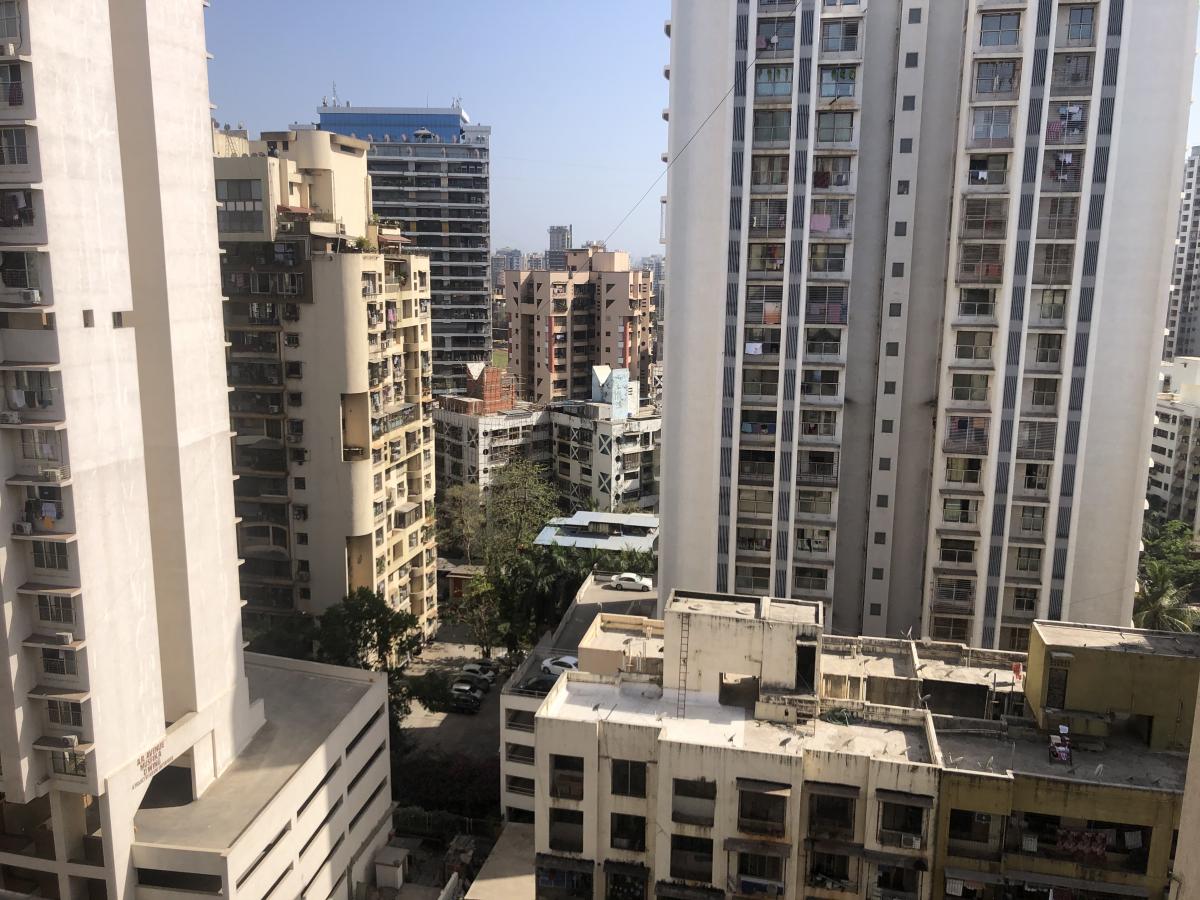
The South-side facing window from my apartment shows buildings—apartment complexes like ours, where residents have experiences like ours.
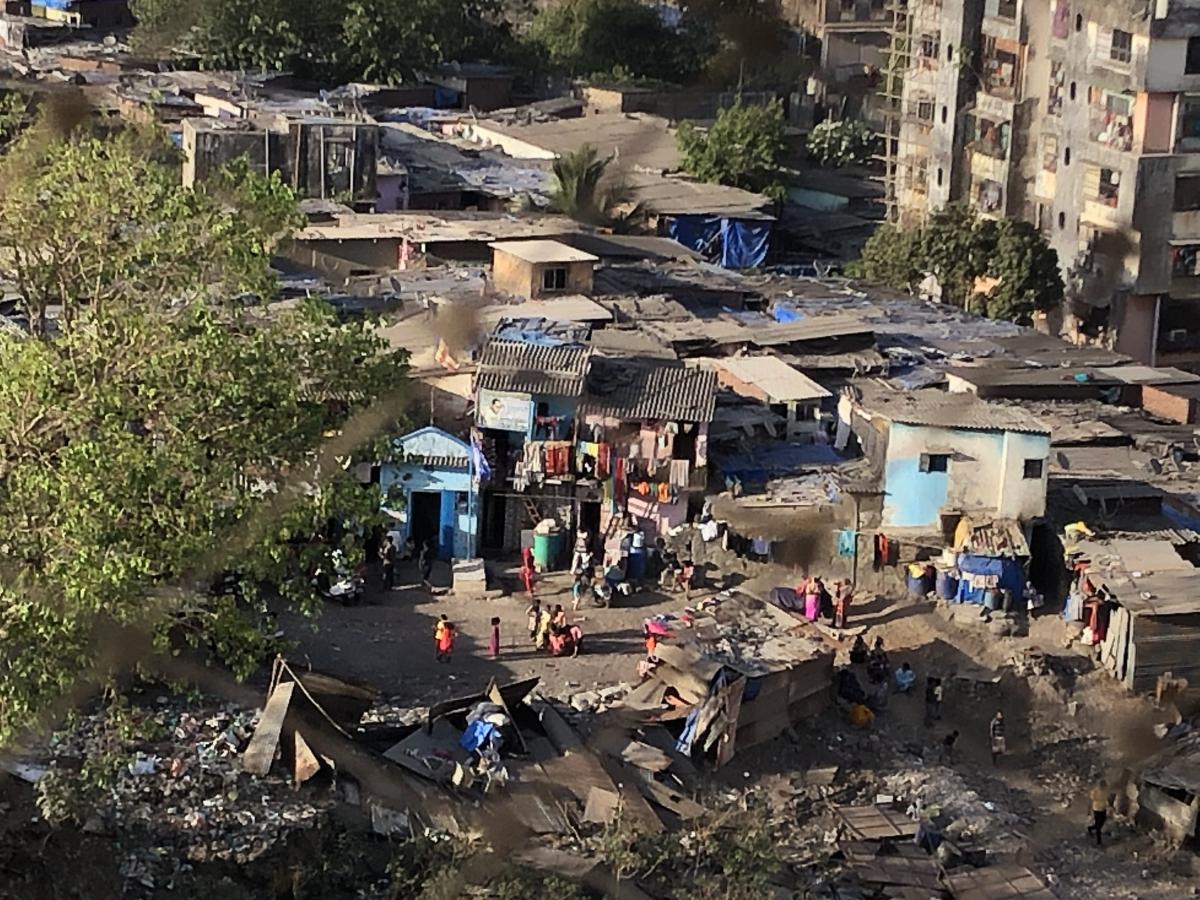
The North-facing window overlooks a basti, showing a starkly different picture. This photograph is from a quiet afternoon when the women and children of the neighborhood sit outside their houses, presumably unwinding after the morning’s work.
As visible, there is hardly any social distancing in practice. Their homes occupy less than 100 sq.ft. where typically 3-4 adults live with 3-4 children.
It forces one to think: What does social distancing really mean in this context? And how to ensure that everybody can maintain it?
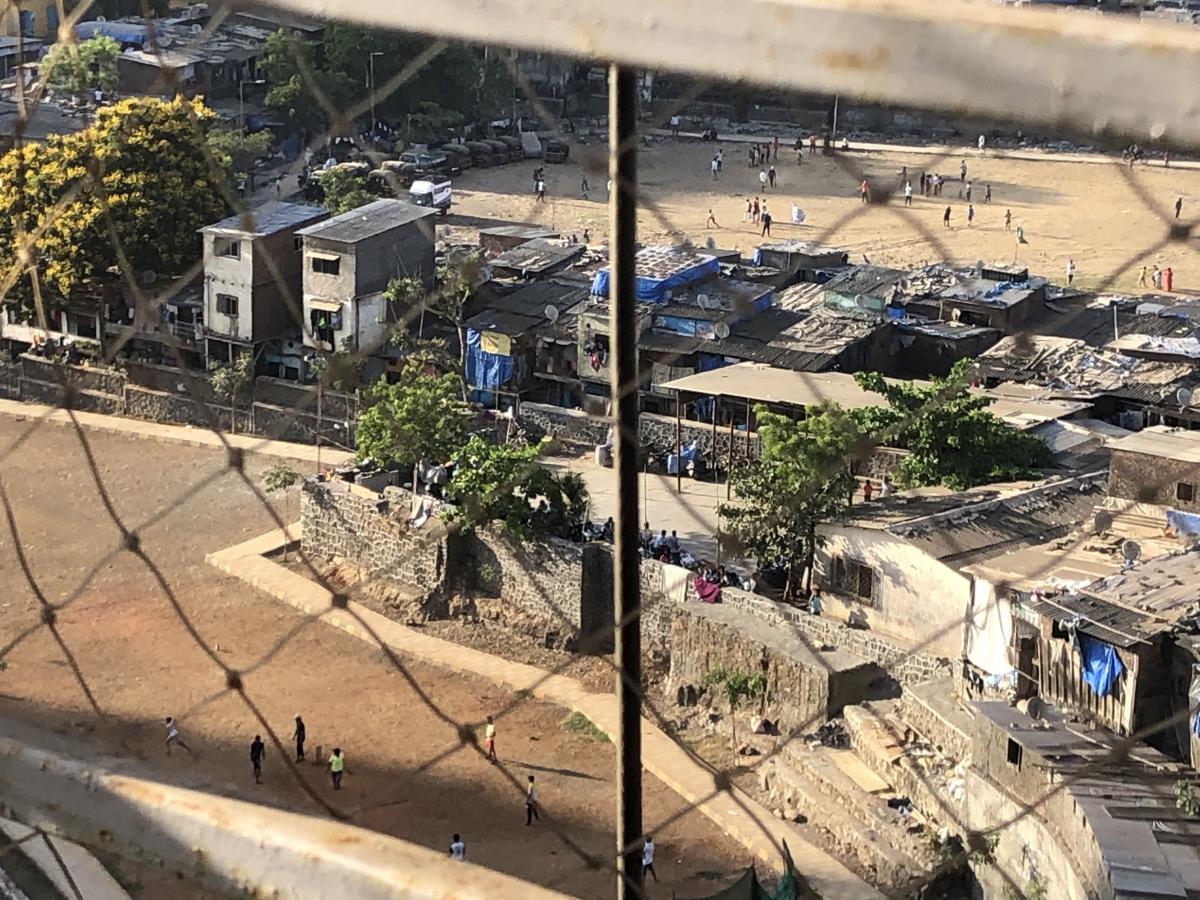
Evenings see kids from these neighborhoods come out of their houses to play in the open spaces nearby.
Some in the surrounding high-rises call the police, complaining about lockdown orders being defied, barely pausing to reflect on the choices, or the lack thereof, before the kids. They face a gamut of problems like lack of space inside their houses, domestic violence, lack of proper entertainment infrastructure, etc.
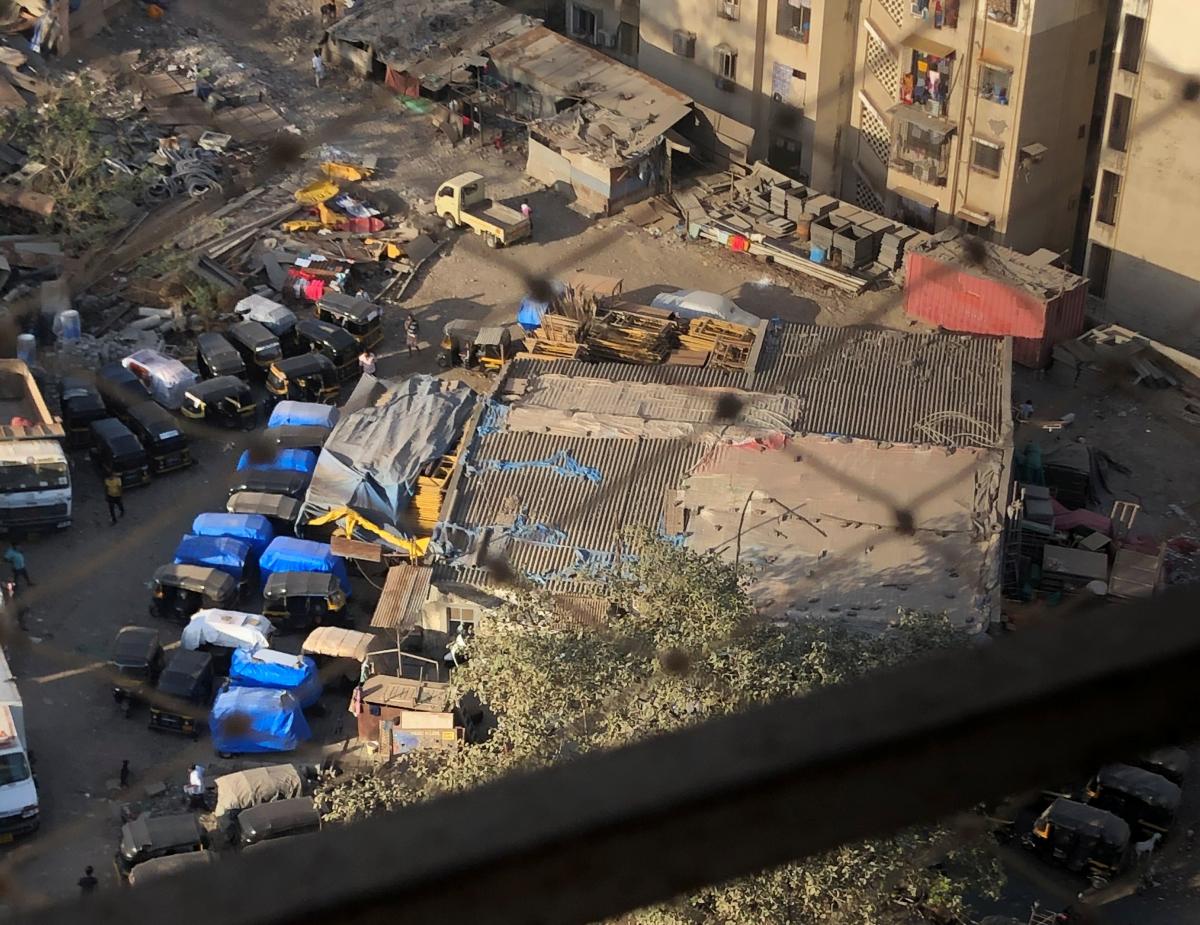
Hundreds of idle autorickshaws hint at the number of daily wage workers without work. None have moved since India’s lockdown began on March 25.
Many of them, migrant laborers, rent these vehicles on a regular basis and still must bear the bare minimum cost. While some of them have managed to go back to their native places, others are still hanging around.
These workers are skilled laborers who can be pressed into action for delivery. They can be trained about the rules of social distancing, and a platform could be created where these rickshaws work as delivery vehicles and help these drivers earn a living.

Most residents don’t have direct access to water. You can see some homes storing water in little containers outside the house. Three buckets might last for the day. Regular hand washing will be a challenge for these households.
The summer is on us. Temperatures will increase as we go into the month of May. These homes get very hot. If this continues, staying indoors will be a health risk in and of itself and increased use will further stress water access.
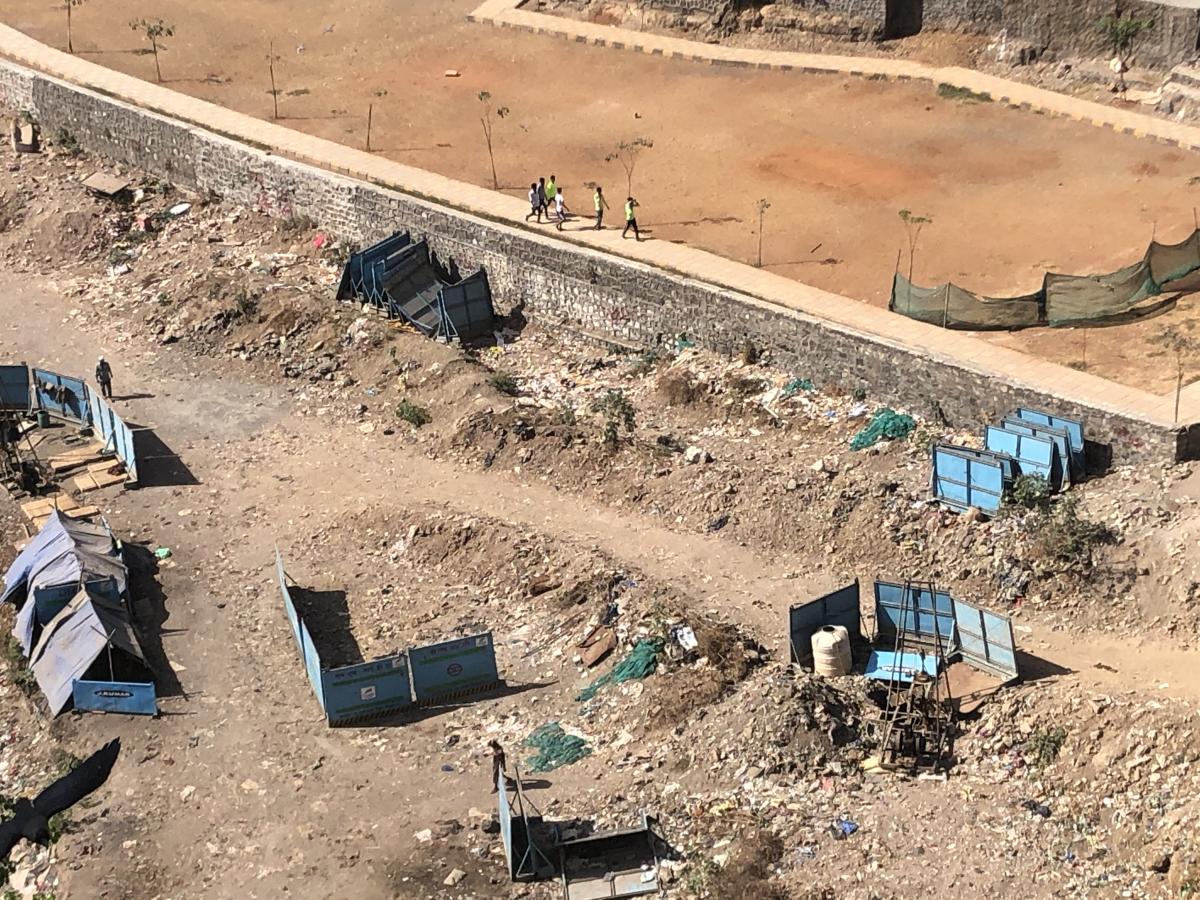
This is the future site of the Mumbai Metro Line 6, where the digging had just started. From what I can gather, they are getting soil samples. This expansion is part of new metro spanning 330km planned for the city. While some portion of financing for the project has been secured, negotiations for the remaining, like new vehicles, is pending. I pray the economy is not hit so badly that some of this crucial public transit infrastructure will be delayed.
Indeed, the value of all public goods seems clearer than ever during the COVID-19 pandemic. We are all in this together, and what happens to one of us, affects us all. The housing divide is stark in cities like Mumbai. But look closer and you see that it’s only the tip of the iceberg. Water, sanitation, employment, transport, public space – for cities to work, we must do more to bring greater access to all kinds of services for all kinds of residents. Without more equitable access, there is no resilience.
My window provides a view into challenges that cities not only in India but across the global south face in the context of COVID-19. We must find ways to extend social and health protections to informal workers; expand access to quality affordable housing and public spaces; ensure delivery of basic services to all; and protect large infrastructure projects that help bridge the urban services divide, like Mumbai’s metro, from financial ruin.
My hope is that the crisis helps cities finally see and understand the hardships faced by the informal economy workers. And this knowledge – and the fear of future shocks – allows us to design stimulus packages that will help ensure cities are more inclusive and more resilient the next time.
This post was originally published on TheCityFix.


